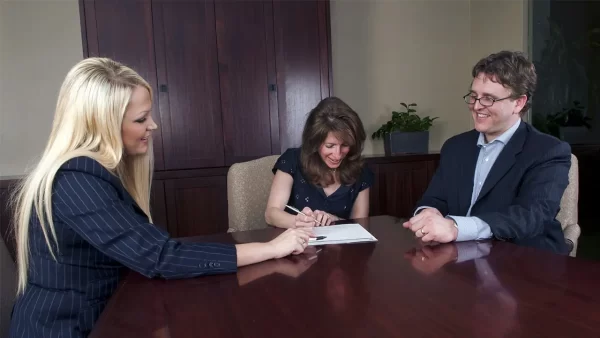
This resource examines the second phase of mediation, that happens when you and your ex-spouse have attended MIAMs and are beginning joint mediation sessions.
What happens when there are just child custody issues?
When mediation is necessary only to address child-related difficulties, the mediator’s goal is to assist separated parents effectively move ahead. Although Countrywide Mediation Basingstoke is often used between ex-spouses, it is also accessible to grandparents who want to see their grandkids.
The mediator will assist you in discussing and recognising what is in the best interests of your children, removing the emotion and differences that have been experienced by the adults involved in the separation and could cloud your judgments regarding the issues that need to be addressed regarding your children. Generally, both parents want what’s best for their children, but this may be lost in separation. Therefore, focusing on the children’s interests and recognising their wants assures that their requirements will continue to be satisfied even if the parents are no longer together. The mediator may also assist you in determining how to demonstrate to your children that, despite your separation, you are working together for their best interests and how to co-parent successfully. Through mediation, you may guarantee that any choices about your children are made by you, the parents, and not by an external authority that does not know your children or the circumstances as well as you do.
Joint mediation meetings can discuss such issues, as well as any concerns either of you may have about the parenting of any children and assist you both develop a realistic parenting plan. Once points have been agreed upon by you and your ex-spouse and a plan has been formed, a mediator would produce a Prenuptial Agreement. This is a thorough document that summarises the talks and choices about your children and future co-parenting that took place during the mediation process. The Parenting Plan is secret and legally protected, so it cannot be used as evidence in future court issues. It is also not legally binding, which means that its provisions cannot be enforced in any manner. However, data indicates that parties are more likely to adhere to a mutually agreed upon agreement. If you or your ex-partner wish to make it legally binding, you may take the paper to a lawyer and have it made so.
Note: If you are attending mediation because to child support difficulties, this still falls under the category of child arrangements and not money.
What occurs during a combined family mediation session including finances?
In cases involving funds and/or property, the mediator will specify precisely which assets are at stake. This contains information about your and your ex-property, partner’s income, future pensions, valuable items, and total expenses, etc. Disclosure is the essential procedure for establishing these facts. This is the procedure through which each party is obligated to provide a complete and truthful inventory of all assets, both joint and individual. It also includes everything that technically belongs to someone else but remains in your name, such as savings accounts for your children. Disclosure and listing of all assets does not always imply that all assets will be automatically divided in a certain manner, since there may be some items that you or your ex have previously agreed upon or that you believe are yours and should not be divided. However, by cataloguing everything in this manner, you are both completely aware of all the numbers prior to making judgments that cannot be reversed. https://countrywidemediation.co.uk/mediation-Brighton/
Disclosure ensures that the topics that are most important to you are prioritised and that areas of both agreement and disagreement may be emphasised in order to find a mutually fair resolution. It guarantees that nothing is missing, and when papers or information seem to be lacking, the mediation process may identify those areas and direct you to services or advice that you may need to ensure that all parties are treated fairly. The mediator will assist you both in making decisions and resolving your predicament. They may assist you in generating suggestions that are acceptable to both you and your ex-spouse, as opposed to continuing in a stalemate.
How does a session of family mediation work?
In the first joint mediation session, the mediator will present a summary of the information (rules) specified in the MIAM, such as confidentiality, protection, respect, and taking pauses, among others. Then, they will provide you an Agreement to Mediate, often known as a mediation agreement. To continue with the procedure, you must sign this paper. By signing, you acknowledge the mediation procedure, the facts on confidentially, data security, costs, and the procedure for file a complaint. The mediator will next ask each party if they have any questions, followed by a request for each side to explain why they are in mediation. After each party has made a statement, the mediator and parties will decide the agenda. The purpose of defining the agenda is to guarantee that all parties are heard and that the things they believe need to be addressed are covered, as well as to prioritise matters and ensure that each mediation session has a framework. Using the agenda as a guide, you and your ex-spouse will next, with the assistance of the mediator, discuss child custody and financial matters.
In subsequent sessions, the mediator will reestablish the rules and then ask if you have any questions before proceeding with the agenda.
Joint mediation sessions may occur whenever the parties choose. Typically, they may last anywhere from a few to several months, depending on how fast the parties reach an accord.
What is the meaning of shuttle mediation?
In situations when the mediator has determined that you and your ex-partner cannot be present in the same room, they may discuss shuttle mediation with you. Here, groups come at different times and occupy separate rooms. The length of shuttle mediation is two hours longer than that of mediation in the same room. The mediator would go from room to room, conveying messages between the disputing parties. Typically, shuttle mediation makes parties feel protected and gives them the courage to communicate freely.
We hope you have appreciated this resource and have found it useful. This is a friendly reminder that all of the information on this website, including resources, blogs, articles, and web page content, may not be used or duplicated in any public domain unless otherwise specified. BRAND is also not responsible for the accuracy of these sites or how individuals utilise the information we give.
